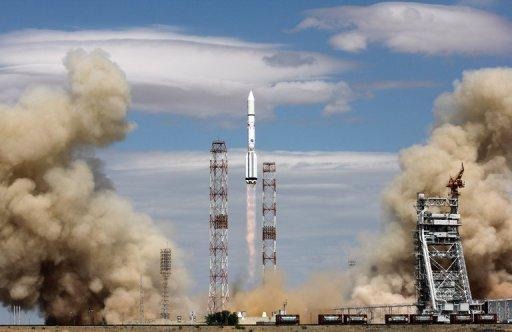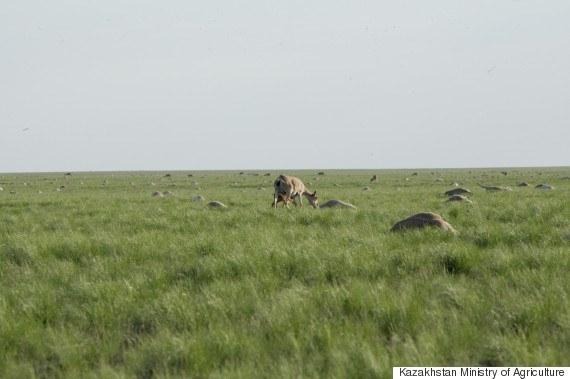Half Of This Antelope Population May Have Been Killed By Rocket Fuel
A mysterious loss of life suddenly grips the remaining population of an endangered species throughout Asia. The Saiga Antelope is experiencing major loss over the past several weeks, and all in Kazakhstan. "This loss is a huge blow for saga conservation in Kazakhstan and in the world," said Kazakhstan's vice agriculture minister Erlan Nysynbaev. Scientists suggest that this scale of death in a single species is absolutely unprecedented. Why is it that in a place where more than 90% of this creature's population exists, is it dying so rapidly?
This isn't the first time this particular species has experienced "mass die-offs." Researchers suggest that 250,000 of this antelope lived across five Asian nations as recent as early this year.
ABOVE: Saiga Antelope, Rotislav Stach – picture-alliance/AP
More than 120,000 of these creatures have died in the last several weeks.
Again that's:
250,000 earlier this year
120,000 deaths in recent weeks
"It is very painful," said Nysynbaev "to witness this mass mortality."
Both Pasteurella and Clostridia have been found in carcasses of animals that've died in the past several weeks. These are both bacteria pathogens, and can be lethal – but not unless the immune system of the animal is already weak enough to be affected.
It's suggested that entire herds are killed at once, and that in NO cases yet found has a single survivor from a herd been found.
That means that once this mysterious ailment hits one animal, its entire herd dies.
No exceptions.
Previous reports of cattle deaths throughout Kazakstan suggest that rocket fuel tests and poisoned fuel are to blame for mass wipe-outs.
BELOW: Russian Proton-M carrier rocket blasts off from its launch pad in Kazakhstan in 2013.

"Experts are working around the clock to investigate the impacts in terms of wildlife health of the relatively high rainfall observed this spring, the composition of the vegetation and other potential trigger factors including a suite of viruses," said Aline Kühl-Stenzel, Terrestrial Species Officer at the UNEP/CMS Secretariat.
"None of the data analyzed to date indicates that rocket fuel is related to the mass die-off. Fresh laboratory results are becoming available every day."

This drop in population is a devastating blow – particularly after the lowest point in global numbers for this antelope just a few years ago. A 95% crash in population in recent years left the global herd at 50,000 animals.
The good news is these antelope can grow in numbers fairly quickly.
"Saiga antelopes often have twins and populations are able to rebound quickly," said Bradnee Chambers, CMS Executive Secretary.
"Our hope is that if we can control what is driving these mass mortality events as well as tackle the number one threat to saigas – wildlife crime and poaching – populations will be able to recover."
You can find additional information via CMS International.
